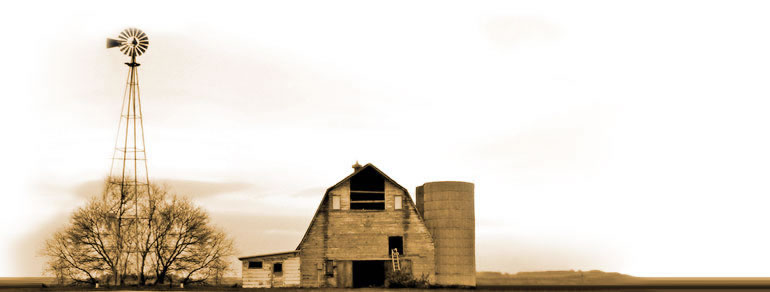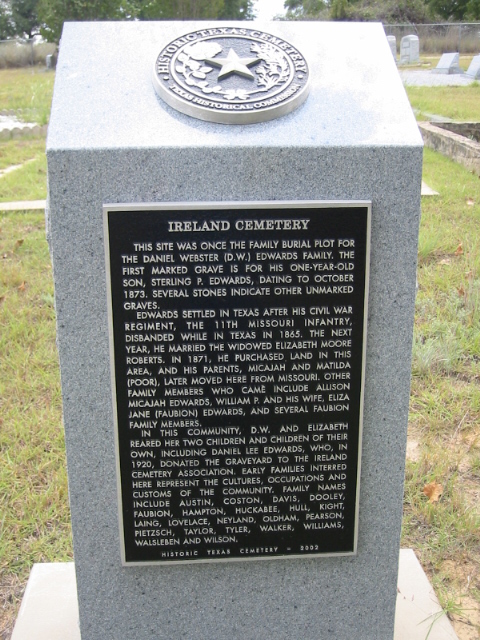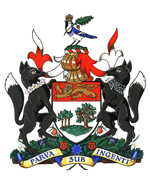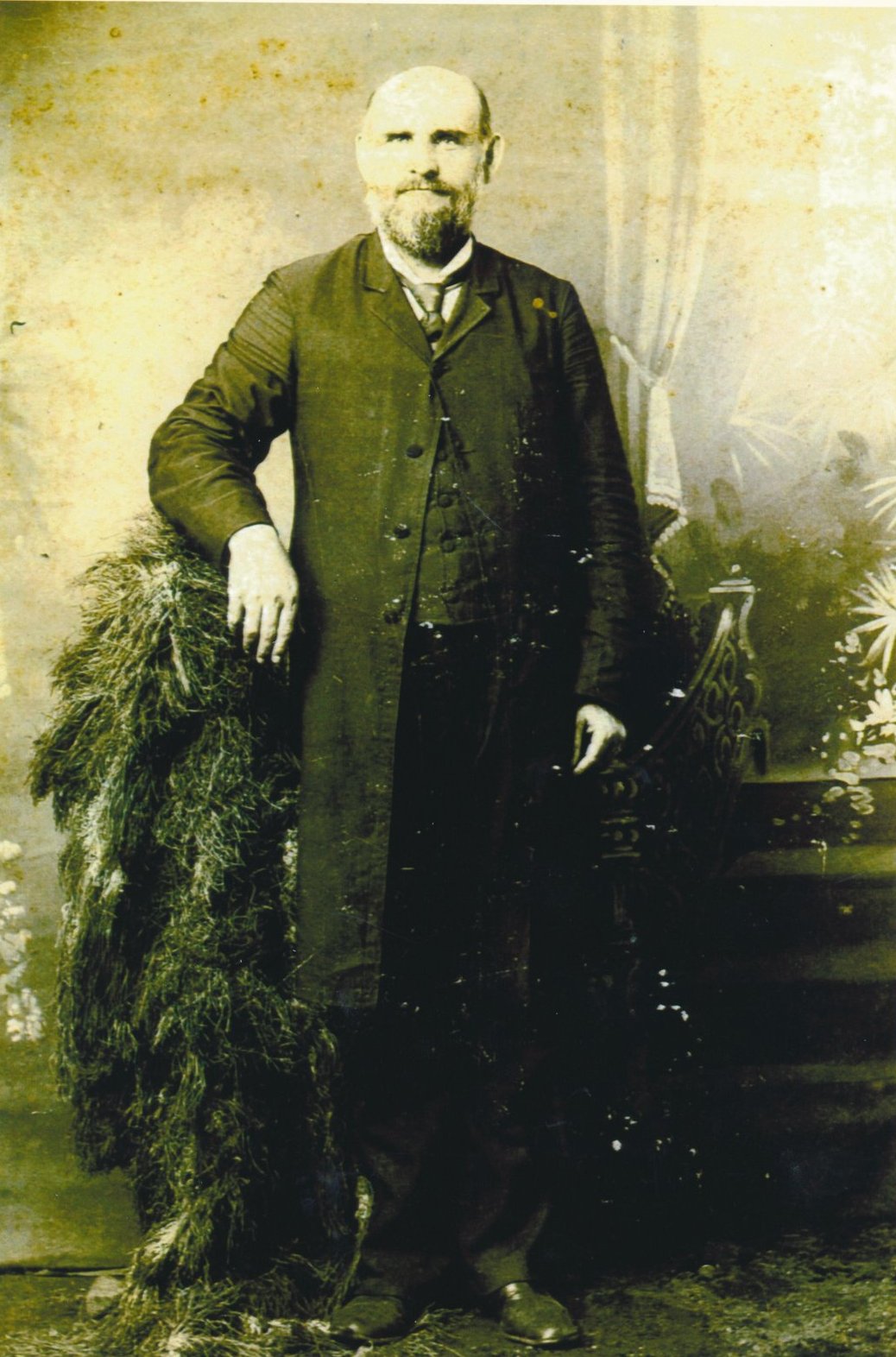
Edwards Family History
Stories About The Edwards Family
If you look online you will find many different versions of the Edwards Coat of Arms and depending on where the Edwards family came from England or Ireland it will vary. On my travels and research I found that this one seemed prevelant to our family.
The story goes that King Henry VIII allowed Agnes Blewitt to put the Tudor Rose onto the Edwards Coat of Arms after she gave birth to their son Richard. Even though King Henry didn't recognize Richard publicly, he allowed her the courtesy of this honor. This is the only coat of arms other than the Tudor Coat of Arms that the Tudor Rose has been allowed to be displayed.
The story goes that King Henry VIII allowed Agnes Blewitt to put the Tudor Rose onto the Edwards Coat of Arms after she gave birth to their son Richard. Even though King Henry didn't recognize Richard publicly, he allowed her the courtesy of this honor. This is the only coat of arms other than the Tudor Coat of Arms that the Tudor Rose has been allowed to be displayed.

Historical Marker in Ireland Cemetary (Edwards Family Cemetary). This was placed here by the Texas Historical Society in 2002.
The Edwards Family Coat of Arms.
King Henry VIII & Mistress Agnes Blewett
The story says Henry VIII is known to have had 6 wives and several mistresses. During his marriage to Catherine of Aragon one mistress is said to have been Agnes Blewett. King Henry the VIII allegedly fathered a son with her. Upon learning of her pregnancy Henry VIII married Agnes off to one of his good friends, William Edwards. She and William named the child Richard Edwards. Agnes and William Edwards lived adjacent to the King's Hunting lodge in Somerset, England until the king gave them land and a castle which they named Edwards Hall. The Edwards' had other children with birth and baptism records stating William and Agnes as the parents, but there aren’t any records for Richard. Richard was never officially accepted as an heir to the throne because of his illegitimacy but he was afforded many favorable opportunities as a young man by the king, including a post at Christ Church College in Oxford. Finally, he was included in the inner circle of the royal family, both during the lifetime and after the death of Henry VIII. This was the pattern of favoritism shown other known illegitimant children of Henry VIII. A book on the subject was written in 1992 by David Dean Edwards called 'Edward's Legacy'
English composer and poet, Richard Edwards, became Master of the Children of the Chapel Royal in 1561 and wrote two plays for them. His five surviving songs, of which the most famous is "In Going to my Naked Bed", show the influence of the Franco-Flemish style on English music before the arrival of the Italian madrigal. Three keyboard arrangements of 3 part-songs (only one assigned to him, but the other two assumed to be his from his authorship of the words) survive in MS.
Richard Edwards was educated at Oxford, receiving both a Bachelor's and a Master's degree. He considered the law as a career, entering Lincoln's Inn Field, but never took up the practice. Instead he became master of the children at the Chapel Royal, where he created musical dramas that the children's choir could perform. The composition, 'Palamon and Arcite' was written for the Queen, and was performed at Oxford. The Queen was impressed with the piece, and intended to bestow a gift on Edwards, but he died soon after the performance. Little more is known of Edwards' life. Edwards' importance as a playwright is that he instigated the basing of the English tragedy on the Latin classical model. His plays were classical in subject, but were set in a contemporary world. The only play of his that is still in existence is 'Damon and Pithias' (1571).
The story says Henry VIII is known to have had 6 wives and several mistresses. During his marriage to Catherine of Aragon one mistress is said to have been Agnes Blewett. King Henry the VIII allegedly fathered a son with her. Upon learning of her pregnancy Henry VIII married Agnes off to one of his good friends, William Edwards. She and William named the child Richard Edwards. Agnes and William Edwards lived adjacent to the King's Hunting lodge in Somerset, England until the king gave them land and a castle which they named Edwards Hall. The Edwards' had other children with birth and baptism records stating William and Agnes as the parents, but there aren’t any records for Richard. Richard was never officially accepted as an heir to the throne because of his illegitimacy but he was afforded many favorable opportunities as a young man by the king, including a post at Christ Church College in Oxford. Finally, he was included in the inner circle of the royal family, both during the lifetime and after the death of Henry VIII. This was the pattern of favoritism shown other known illegitimant children of Henry VIII. A book on the subject was written in 1992 by David Dean Edwards called 'Edward's Legacy'
English composer and poet, Richard Edwards, became Master of the Children of the Chapel Royal in 1561 and wrote two plays for them. His five surviving songs, of which the most famous is "In Going to my Naked Bed", show the influence of the Franco-Flemish style on English music before the arrival of the Italian madrigal. Three keyboard arrangements of 3 part-songs (only one assigned to him, but the other two assumed to be his from his authorship of the words) survive in MS.
Richard Edwards was educated at Oxford, receiving both a Bachelor's and a Master's degree. He considered the law as a career, entering Lincoln's Inn Field, but never took up the practice. Instead he became master of the children at the Chapel Royal, where he created musical dramas that the children's choir could perform. The composition, 'Palamon and Arcite' was written for the Queen, and was performed at Oxford. The Queen was impressed with the piece, and intended to bestow a gift on Edwards, but he died soon after the performance. Little more is known of Edwards' life. Edwards' importance as a playwright is that he instigated the basing of the English tragedy on the Latin classical model. His plays were classical in subject, but were set in a contemporary world. The only play of his that is still in existence is 'Damon and Pithias' (1571).

Robert Edwards (1608-1680) and "The Society"
Robert Edwards and his brother William Edwards owned a ship called "The Society". There are several immigrant manifests that state Robert and William did a lot of traveling in his time. They sailed back and forth to Ireland many times and brought immigrants to America, they also sailed to Barbados many times. I'm not sure as to what they did in Barbados but can only speculate that they may have been bringing slaves to America because of the location and time.
The Barbados Code: adopted by Carolina in 1696 to control slaves at the will of their masters. It was often noted as an inhumane code but the society revolved around slaves, so laws like this were created in order to keep control in the society. White owners relied on force and fear to control the growing black majority in the Carolinas.
Robert Edwards and his brother William Edwards owned a ship called "The Society". There are several immigrant manifests that state Robert and William did a lot of traveling in his time. They sailed back and forth to Ireland many times and brought immigrants to America, they also sailed to Barbados many times. I'm not sure as to what they did in Barbados but can only speculate that they may have been bringing slaves to America because of the location and time.
The Barbados Code: adopted by Carolina in 1696 to control slaves at the will of their masters. It was often noted as an inhumane code but the society revolved around slaves, so laws like this were created in order to keep control in the society. White owners relied on force and fear to control the growing black majority in the Carolinas.




THE EDWARDS FORTUNE
I stumbled across this story and it totally blew my mind. So I just had to share this with everyone. There are many versions of the story printed and I will leave it up to you to decide what to believe and not believe. Just to let you know this is the land that the NYSE, Broadway and World Trade Centers are located on. To clarify the situation I believe that our line is decended from Robert's brother, William. I cannot substantiuate this claim at the moment with the proper documents that would be required. So, enjoy the stories.
This is how the story mainly goes. Robert Edwards received 77 acres of largely unsettled Manhattan land by Queen Anne of the Kingdom of Great Britain for his services in disrupting Spanish sea lanes. From Edwards, who died in 1780, the property passed in 1877, via a 99-year lease to the brothers John and George Cruger, with the understanding that it would revert back to his heirs, brothers and sister, after the lease expired. Apparently, this never happened. It is alleged that the Crugers were wardens of Trinity Church, an Episcopal Church -- today, one of New York City's biggest land owners. Maybe everything was tangled in a muddle of colonial Manhattan land giveaways. But, according to family lore, the whole tract wound up in Trinity's hands.
The legend has since proved persistent, and indeed some high profile claims of rightful ownership to the fortune, now estimated to be worth around 650 billion dollars. The most recent of these was a claim from a Cleoma Foore, whose research led to the foundation of the 'Pennsylvania Association of Edwards Heirs', a body funded by donations in a bid to finally prove that they were entitled to the vast fortune through direct ancestry. This fund attracted around $1.5m at its peak, but no firm evidence was forthcoming. Indeed, the end result was an embezzlement case tried at the federal court in Pittsburgh before Chief Judge Donald E. Ziegler in 1983.
More recently, this ancient claim has been the subject of many multimedia productions including books, TV shows and radio reports and a 1998 primetime UK TV show called 'Find a Fortune' and hosted by Carol Vorderman amongst others, attempting to shed new light on the topic.
A document held at the Glamorgan Record Office in Cardiff, Wales, entitled 'Edwards Millions' outlines the case as it stands today, with claims and counter claims further muddying the issue.[1] Tales of unscrupulous lawyers and fraudulent claims have also hampered attempts by amateur researchers to get to the truth. Finally, the introduction of the 'Statute of Limitations' in NY State, which sets a time limit for all claims, to be commenced within fifteen years of the expiration of a lease, appears to have all but buried the claim with the death of Robert Edwards himself.
The only document that could prove the matter would be the original of the 99-year lease signed over to the brothers Cruger, but that would now be statute barred.
* * * * * * * * *
Edit February 2011 CAPTAIN ROBERT EDWARDS received the New York property, a bequest from Queen Anne of England, as a commendation for service. He leased the land to John and George Cruger for 99 years for "1,000 pounds and a pepper corn yearly" as set out in a lease dated June 1, 1778, signed and executed at Manhattan Island. The land and all improvements thereon were to revert to the descendants of his lawful living heirs and those of his siblings, six brothers and a sister, at the expiration of the lease, i.e. May 31, 1877. Robert was the eldest acting on behalf of his silblings and it is understood died shortly after signing the Cruger lease.
Beginning in the late 1800's, any and all attempts by Canadian and American heirs to file a claim to such land proved fruitless. Lawyers sent to plead cases disappeared. Enquiries often met with stonewalling. The case was eventually carried through all New York State courts and lost everywhere. With the passage of time, claims were defeated by the state's Statute of Limitations.
A copy of the original lease is in the hands of at least one of the Edwards descendants, probably more, and the New York property story has been passed down through families.
Below are websites where I found most of the info about this story.
It makes for some very interesting reading.
https://archive.org/stream/edwardsheirs00unse/edwardsheirs00unse_djvu.txt
www.unsolvedmysteries.com/usm10848.html
nymag.com/nymetro/realestate/features/1204/
www.nytimes.com/1994/01/01/us/family-tale-of-a-legacy-2-centuries-of-setbacks.html
The legend has since proved persistent, and indeed some high profile claims of rightful ownership to the fortune, now estimated to be worth around 650 billion dollars. The most recent of these was a claim from a Cleoma Foore, whose research led to the foundation of the 'Pennsylvania Association of Edwards Heirs', a body funded by donations in a bid to finally prove that they were entitled to the vast fortune through direct ancestry. This fund attracted around $1.5m at its peak, but no firm evidence was forthcoming. Indeed, the end result was an embezzlement case tried at the federal court in Pittsburgh before Chief Judge Donald E. Ziegler in 1983.
More recently, this ancient claim has been the subject of many multimedia productions including books, TV shows and radio reports and a 1998 primetime UK TV show called 'Find a Fortune' and hosted by Carol Vorderman amongst others, attempting to shed new light on the topic.
A document held at the Glamorgan Record Office in Cardiff, Wales, entitled 'Edwards Millions' outlines the case as it stands today, with claims and counter claims further muddying the issue.[1] Tales of unscrupulous lawyers and fraudulent claims have also hampered attempts by amateur researchers to get to the truth. Finally, the introduction of the 'Statute of Limitations' in NY State, which sets a time limit for all claims, to be commenced within fifteen years of the expiration of a lease, appears to have all but buried the claim with the death of Robert Edwards himself.
The only document that could prove the matter would be the original of the 99-year lease signed over to the brothers Cruger, but that would now be statute barred.
* * * * * * * * *
Edit February 2011 CAPTAIN ROBERT EDWARDS received the New York property, a bequest from Queen Anne of England, as a commendation for service. He leased the land to John and George Cruger for 99 years for "1,000 pounds and a pepper corn yearly" as set out in a lease dated June 1, 1778, signed and executed at Manhattan Island. The land and all improvements thereon were to revert to the descendants of his lawful living heirs and those of his siblings, six brothers and a sister, at the expiration of the lease, i.e. May 31, 1877. Robert was the eldest acting on behalf of his silblings and it is understood died shortly after signing the Cruger lease.
Beginning in the late 1800's, any and all attempts by Canadian and American heirs to file a claim to such land proved fruitless. Lawyers sent to plead cases disappeared. Enquiries often met with stonewalling. The case was eventually carried through all New York State courts and lost everywhere. With the passage of time, claims were defeated by the state's Statute of Limitations.
A copy of the original lease is in the hands of at least one of the Edwards descendants, probably more, and the New York property story has been passed down through families.
Below are websites where I found most of the info about this story.
It makes for some very interesting reading.
https://archive.org/stream/edwardsheirs00unse/edwardsheirs00unse_djvu.txt
www.unsolvedmysteries.com/usm10848.html
nymag.com/nymetro/realestate/features/1204/
www.nytimes.com/1994/01/01/us/family-tale-of-a-legacy-2-centuries-of-setbacks.html

William Poor Edwards (1846-1916)
W.P. fought in the Civil War from Mar 1, 1862 to Oct. 1864 and was a Union soldier. He was in Co. D, 8 Reg't MO State Militia Cav. I found his Company Muster Rolls for the time he served. It shows on his Muster Rolls that he also payed for a horse and equipment during the time he served. W.P. was honorably discharged and afterwards moved his family to Texas after his brother, Daniel W. Edwards, married a widow in Texas and urged them to all move out there. He moved to Texas with his parents, Micajah and Maltida Edwards, and some of the Faubion family. (Eliza Jane's family)
After his death Eliza Jane Edwards applied for and was granted a Civil War Widow's Pension from the government.
Carl Edwards, Sr. use to tell stories about how his grandfather, W.P. Edwards, would chase all of the grandkids around the yard on his wooden peg leg.
W.P. fought in the Civil War from Mar 1, 1862 to Oct. 1864 and was a Union soldier. He was in Co. D, 8 Reg't MO State Militia Cav. I found his Company Muster Rolls for the time he served. It shows on his Muster Rolls that he also payed for a horse and equipment during the time he served. W.P. was honorably discharged and afterwards moved his family to Texas after his brother, Daniel W. Edwards, married a widow in Texas and urged them to all move out there. He moved to Texas with his parents, Micajah and Maltida Edwards, and some of the Faubion family. (Eliza Jane's family)
After his death Eliza Jane Edwards applied for and was granted a Civil War Widow's Pension from the government.
Carl Edwards, Sr. use to tell stories about how his grandfather, W.P. Edwards, would chase all of the grandkids around the yard on his wooden peg leg.

Story of King Henry VIII & Agnes
Blewett

This is a drawing of the castle, Edwards Hall, that King Henry VIII gave to his mistress, Agnes Blewett, upon her marriage to William Edwards. She named it Edwards Hall and it was located in Cardiff, Glamorganshire, Wales. It was built sometime around 1050 - 1100 in the time of William the Conqueror. The Edwards family lived in it for many generations until it was eventually abandoned in the early 1700's. Nothing but a pile of rubble now remains to mark its location in this rough, hilly, rocky land.
EDWARDS HALL
